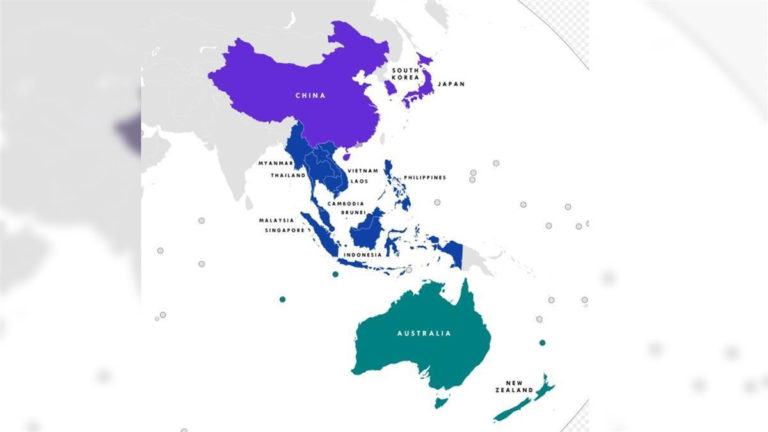Bloomberg defines it as “the largest free trade deal in the world”: RCEP (Regional Comprehensive Economic Partnership) brings together the ten nations of ASEAN, along with China, Japan, South Korea, New Zealand, and Australia, in an agreement that represents a third of the world’s population (2.2 billion people) and global GDP (26.2 trillion dollars). The signing of the deal, which occurred this past 15 November when regional economies were fighting to rise up from the pandemic, is a huge victory for China and represents an alternative to TTP (the Trans-Pacific partnership) signed in 2016 that excluded the colossal presence of China. The timing is important because it also represents a blow to the “America First” policy, immediately following the defeat of Trump in the elections, and it demonstrates the desire of Asian nations to move forward in their attempt to create economic integration between the regions. It’s no coincidence that Chinese premier Li Keqiang called it “not only a monumental achievement in East Asian regional cooperation, but also a victory of multilateralism and free trade”.
The free trade agreement, which according to the estimates of economists will have the potential of adding 186 billion dollars to the world economy, includes 20 different chapters that range from the trade of goods, investments, and electronic commerce to intellectual property and government procurement and competition. In particular it calls for the elimination of 90% of import tariffs over the next twenty years – a measure that according to the signatories could have been more incisive (arriving at 100%), but which will nevertheless give a big boost to trade.
A notable absentee in the deal is India, which for now has not ratified the pact, not only for economic reasons – the fear of the deal’s impact on its trade deficit with China – but also political, in light of Modi’s support of Trump’s policies. However, it might still change its mind and adhere to it at some future date.
Likewise important is the ratification of New Zealand and Australia, which despite their support of U.S. politics and military, did not want to miss out on the enormous trade opportunities that the deal will generate. As the saying goes: “pecunia non olet”.
Although the agreement is an initiative of ASEAN member countries, benefitting the most will be China, which today is justifiably perceived as the “champion of globalisation”, and its role as a leader. The numerous advantages for China will include greater influence in governing trade laws in the region; stronger ties with poorer countries in Asia like Laos and Cambodia; it will allow Malaysia and Philippines to find common ground in the South China Sea dispute; and it will supercharge China’s power through the new Silk Road that will contribute to downsizing the role of the U.S.A. in Asia.



